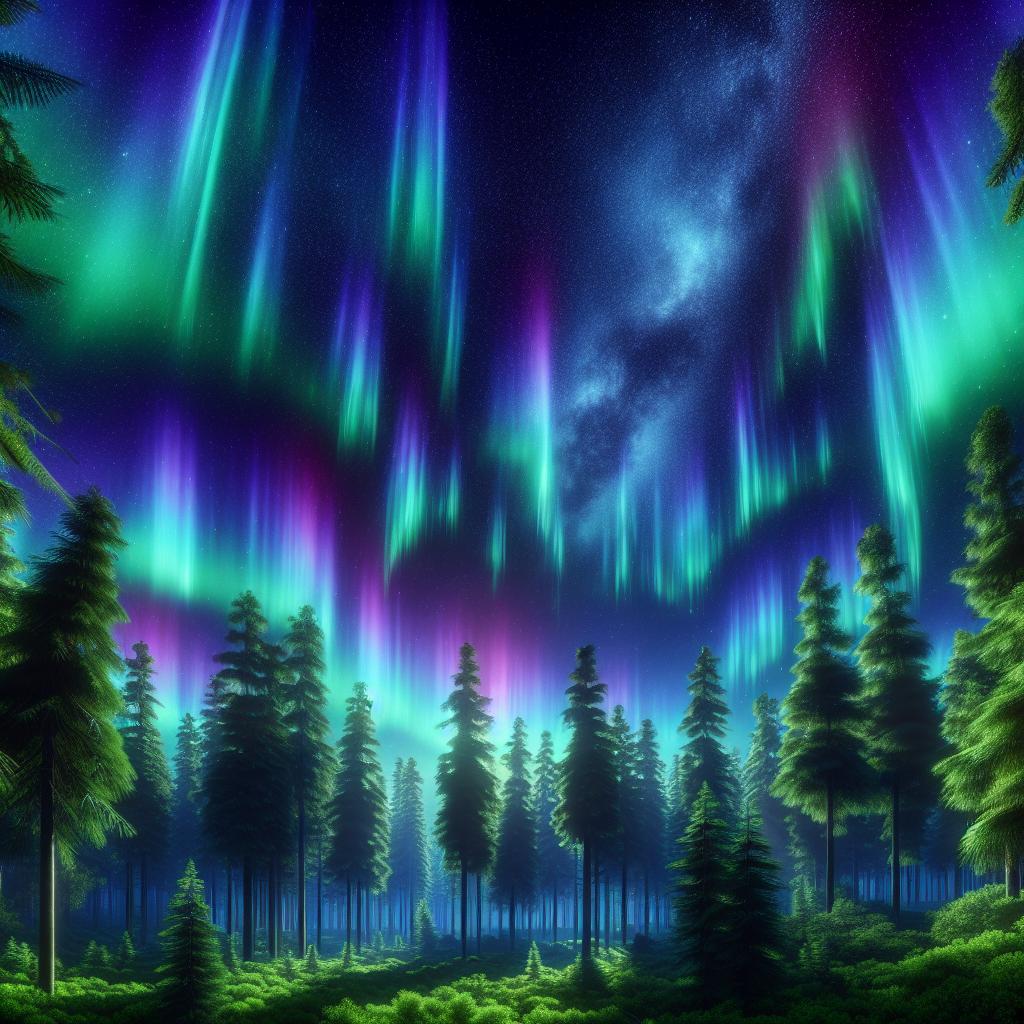

"Aurora Borealis over forest"
Residents of various cities across the northern United States are buzzing with excitement as the forecast for the aurora borealis shines brightly this weekend. According to the latest update from the National Oceanic and Atmospheric Administration (NOAA), the stunning natural light display could be visible Saturday night, particularly from regions along the northern edge of the country.
This Saturday, the NOAA is predicting a KP index of seven, a significant increase that suggests a strong chance of witnessing the spectacular lights in the sky. The KP index measures geomagnetic activity, and a value of seven indicates that the aurora could be “quite bright and active.” This increase in geomagnetic activity is further supported by a strong geomagnetic storm watch currently in effect, which could broaden the areas where the Northern Lights can be seen.
For sky watchers hoping to catch a glimpse of the lights, the viewing line stretches down to parts of central Nebraska. However, the closer one gets to the northern regions, the better the chances of seeing the Northern Lights. States impacted by this forecast include:
While many areas within these states may have a low chance of viewing, the upper regions of Montana, North Dakota, and Minnesota hold a much higher promise for seeing the dazzling display.
For those eager to catch the show, the best time to look up will be between 10 p.m. and 2 a.m.. It is recommended to find locations away from any light pollution to improve visibility. Additionally, having a clear sky will greatly enhance the chances of experiencing the aurora.
For photography enthusiasts, taking advantage of the night mode on smartphones or using a camera with longer exposure settings can yield stunning results when trying to capture the aurora borealis.
Saturday’s aurora forecast comes following an equally impressive showing on Friday night, when a strong geomagnetic storm was expected with a KP index of five. This uptick in solar activity has been observed over the past few months as we approach the peak of Solar Cycle 25. The sun’s eleven-year cycle is anticipated to reach its peak somewhere between late 2024 and early 2026, signaling potential for even more activity in the coming years.
As excitement builds, sky watchers and adventure seekers alike should prepare themselves for what could be a spectacular presentation from nature. With the promise of vibrant colors dancing across the night sky, this weekend is shaping up to be a memorable one for those living in the northern U.S.
As the skies prepare for their enchanting display, many will be hoping to catch the magnificent visibility of the Northern Lights, reminding everyone of the beauty that a little cosmic activity can bring to our world.
News Summary Multiple federal websites, including Census.gov and health-related pages, experienced unexpected outages, raising concerns…
News Summary On March 28, 2025, President Trump issued an executive order targeting the Smithsonian…
News Summary The Trump administration's plan to dissolve the U.S. Agency for International Development (USAID)…
News Summary On Friday afternoon, Delta Flight 2983 nearly collided with a U.S. Air Force…
News Summary Shreveport's City Council has unanimously approved a lease agreement with 50 Cent's G-Unit…
News Summary As the holiday season opens, Shreveport is poised for its annual celebration with…